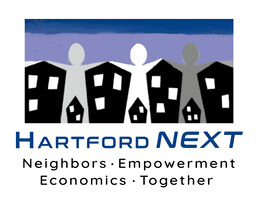What is a Neighborhood Revitalization Zone?
*Now Southwest/Behind the Rocks
**Now Frog Hollow
***Dissolved and incorporated into MARG and Frog Hollow
Hartford 2000/Hartford NEXT
In 1996, the city of Hartford applied for State Urban Act funding which was earmarked for capital projects. Included in this application were the most critical needs and the strategies to address them that were created by the NRZs. NRZ members, with the assistance of several city staffers, joined together to create a strategy to educate the Connecticut General Assembly about the stabilization and revitalization activities included in the city’s application. Their strategy included hosting a reception for state and local officials at which neighborhood leaders described their revitalization needs, explained the initiatives underway, and outlined how an infusion of state funding would advance the revitalization agendas. After extensive discussion and negotiation, $7 million was approved by Governor John G. Rowland and the State Bond Commission.
Prior to this collaboration, Hartford neighborhoods were often more competitive than cooperative. Neighborhood leaders now appreciated the value of the collaboration. Neighborhood leaders began to meet monthly and were provided meeting space in City Hall and the city’s Assistant Manager, Linda Bayer, voluntarily served as a liaison with the city. From these meetings came the organization of Hartford 2000. The organization obtained its 501(c)(3) nonprofit designation in 2006. The organization’s name was changed in 2019 to implement a more contemporary vision to provide the NRZs, its membership, and all Hartford residents opportunities to effectively participate in the civic processes that generate true change in our neighborhoods and the City at large.

